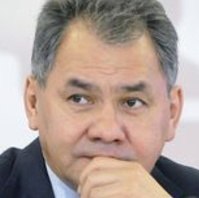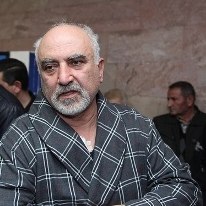Here’s an Oxford Analytica brief I wrote a few months ago. This was originally published November 19, 2012. There have been a number of new developments since then, but this is still worth reading for my perspective of what worked, what didn’t, and what challenges Shoigu will be facing in the near future…
—–
SUBJECT: Key accomplishments of Russia’s military reform and its mid-term prospects.
SIGNIFICANCE: Russia’s defence industry remains in a fairly decrepit state, plagued by outdated equipment, lack of experienced personnel, inefficient production processes and extensive corruption. Government efforts to revive the industry through restructuring and targeted investment have produced few improvements, creating instead a large number of unwieldy government-controlled monopolies.
ANALYSIS: Impacts
- A mobile and well-equipped military will enable Russia to become a more efficient player in local and regional conflicts.
- The higher budget allocations could translate into higher salaries for the military, raising the prestige of military service.
- The defence industry’s difficulties in manufacturing ultramodern equipment will hinder the efforts to improve Russian military capabilities.
- Recent personnel changes in the Ministry of Defence (MoD) provide an opportunity to assess the state of the Russian military after four years of reforms and the issues that it is facing at the start of the incoming defence minister’s tenure.
Russia’s most successful defence minister?
One of the greatest successes of former Defence Minister Anatoly Serdyukov was the radical military reform that he launched in the immediate aftermath of Russia’s war with Georgia in August 2008.
More mobility
Working closely with Chief of the General Staff Nikolai Makarov, who masterminded much of the reform, Serdyukov succeeded in dismantling the Soviet-era structure of the Russian military and replacing it with a structure more suited to 21st century warfare. He substituted the unwieldy divisions geared towards fighting large frontal wars with much more mobile and largely self-sufficient brigades.
Faster mobilisation
The reform also ended the Russian military’s dependence on mass mobilisation to fight its wars. During the post-Soviet period, many military units existed mostly on paper and were staffed by only a few officers in charge of warehouses filled with unusable weapons and equipment. It could take up to one year for most of these units to become combat-ready. Under Serdyukov, they were eliminated, and the military began a gradual transition to a structure based on fully staffed units that could mobilise in less than a week. Some of these units should be able to respond to a sudden conflict within 24 hours.
Better inter-service cooperation
The military also made great strides in becoming better coordinated in its operations. Under the previous command structure, inter-service cooperation on the battlefield required coordination from Moscow. This led to numerous incidents of miscommunication that resulted in losses to friendly fire and problems with essential combat requirements, such as the timely provision of air cover for advancing ground forces. The establishment of four regional unified strategic commands allowed local commanders to organise all military elements in their respective region, which greatly enhanced inter-service cooperation.
All of these organisational changes have been made in an effort to enable the Russian military to respond more quickly to unexpected local or regional conflicts. These are the only types of wars that the Russian military has been engaged in since the Afghanistan conflict of the 1980s. Military planners expect this to be the most common form of warfare in the foreseeable future as well.
Failed reforms
Although he did a great deal to rid the Russian military of its Soviet legacy, Serdyukov was far less successful in interpersonal matters: the minister’s lack of military experience and his hard-charging style, which earned him the nickname ‘Bulldozer’, alienated most of the senior and junior officers under his command.
Military continues to face housing crisis
Although military salaries were increased substantially during Serdyukov’s term, the MoD failed to fulfil its long-standing promise to provide its serving and retired officers with acceptable housing. Although the MoD asserted that large numbers of apartments were being constructed, many eventually turned out to be uninhabitable because of poor construction methods. At the same time, a rapid reduction in the number of serving officers resulted in yet more retired personnel on waiting lists for permanent housing.
Corruption remains rampant
Before Serdyukov became head of the MoD, the military was widely known as one of Russia’s most corrupt institutions, with senior officers accumulating large amounts of money by redirecting procurement and construction funding and using conscript labour for personal needs. The circumstances surrounding Serdyukov’s removal suggest that his goal of stamping out corruption in the military during his tenure was far from being achieved.
Challenges ahead
Shoigu, the new minister of defence, has maintained a relatively clean reputation throughout his tenure as minister for emergency situations and as the governor of the Moscow region. He also appears to have the support of senior officers, most of whom despised his predecessor. However, the military he has inherited is still facing a number of serious challenges.
Military remains small and untrained
The most pressing problem is the military’s lack of soldiers. A decline in childbirth in the early 1990s has resulted in a corresponding drop in the number of 18-year-old men available for conscription. At the same time, salary increases and improvements in living conditions have done little to encourage Russians to serve in the military as contract soldiers. As a result, the military is facing significant personnel shortages. Moreover, the military’s inability to attract a sufficient number of contract soldiers also affects its battlefield readiness: conscripts who serve for only a year before demobilisation do not have enough training to handle the modern weapons that the military hopes to acquire by 2020.
Need for more modern equipment
The second major challenge facing the new defence minister is the implementation of a highly ambitious ten-year rearmament programme that is expected to modernise 70% of Russia’s weapons by 2020. Serdyukov and Makarov had made many enemies in the defence industry by insisting that the MoD would not pay inflated prices for substandard, domestically manufactured equipment. Shoigu, at least initially, appears poised to take a softer line with the industry. This may win him friends but is also likely to burden the military with outdated and overpriced weapons systems.
CONCLUSION: As Russia’s new defence minister, Sergei Shoigu faces several key challenges: he will need to modernise military equipment, raise the number of well-trained personnel and crack down on widespread corruption. Shoigu will have to walk a fine line between remaining on good terms with the military-industrial lobby and seeing through the reforms initiated by his predecessor.
Dmitry Gorenburg is a Senior Analyst at CNA blogging for PONARS Eurasia on military and security affairs in Russia and Eurasia. This comment is also available on Russian Military Reform.











